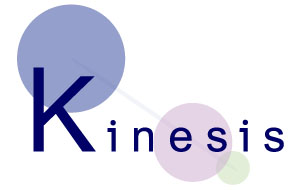


For such a long time we’ve been training single muscles, today we are thinking about muscle-chains, and what will come tomorrow?
Tomorrow we will train the endless fascial web in our bodies!
Recently it has been proofed, that this all-surrounding and all-connecting net throughout the body means a lot for the fitness and health of every sportsman, professional or not. A well trained and well integrated fascial net optimizes peak forces as well as the coordination of detailed movements. It’s not the joint receptors giving information about how the body behaves kinesthetically, but the many receptors located in the fascia. That means, not the skin is our biggest sensory organ, but fascia. With fascial training you can push your limits of performance.
Some sportsmen say: “Today I’ve been able to give 110% of my capacity”.
Fascial trained sportsmen will answer: “I could give 140% and had lots of fun with it.”
An integrated fascial training will lead to:
– better performance.
– less injury.
– more fun and variety.
Four Areas of Fascial Fitness
Stop with boring, single muscle stretches and start to play around creatively feeling your connected Fascial Net. Since a muscle does not stop at its bony insertion but continues in what Tom Myers calls “Anatomy Trains”, the action of one muscle continues throughout the whole body. If these connections don’t work properly, there is a problem with well coordinated muscular actions. With easy (and sometimes only varied versions of well known) exercises, it is possible to stimulate the whole Myo-Fascial system.
Rebound Elassticity is the future of most effective muscle-training. More power and more Flexibility! That will be the result of of the Elastic-Recoil-Effect. Only if the fascia is pre-stretched you can perform a maximum of forces. Weightlifters for example could not lift their heavy weights with muscular power only, they need fascial tension to do this. Even more important is the fact, that every bending forward and coming back could not be done without fascial tension. This could be a revolution for backpain-prevention and a reason to integrate fascial-fitness in prevention programs. Rebound Elasticity is highly efficient and builds up well proportioned bodies in less time than common muscle-training.
Most effective and up-to-date is this trend called fascial release – a quick and easy-to-feel possibility to treat your own body. The myofascial structures are given pressure with a roll, so that adhesions are dissolved and the tissue gets softer. This will normally lead to a reduction of pain, more flexibility and a better sense for your own body. Thinking of that, this method is not only good for sportsmen, but also for therapy and self-treatment.
Fascia does not only give a form to our body, but is also the biggest sensory organ. Since in our times the sensory perception is not meant to be so important, we often lose connection to our-selves and get the wrong information about our environment. So a healthy sensory system gives a healthy self-awareness which will lead to self-confidence and, as many scientists assume, even to higher intelligence. Finding back to a sensitive awareness is the function of Fluid Refinement. Just like a musician trains various ways and techniques to play his instrument, it’s a pretty good thing to train our senses and perception in the same manner. Not always doing the same things in the same way, but having fun with variations helps us to act adequately in our complex world. That’s true for musicians, as well as for dancers, sportsmen, Yoga-people and everybody else….
Join our mailing list to receive our main news by email.
It’s free and you can unsubscribe with a single click.








